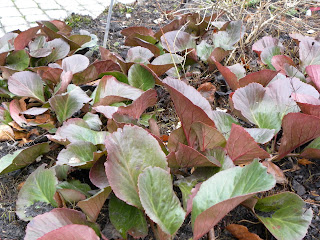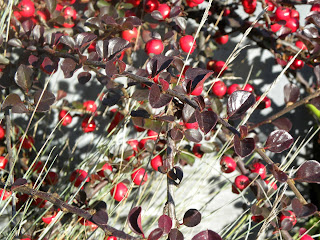In the Garden Hall Courtyard:
Cotoneaster dammeri (Bearberry Cotoneaster) with Picea pungens 'Procumbens' (Colorado Spruce); the red berries of this fast growing groundcover cotoneaster are striking againt the prostrate, cascading blue branches of the spruce
In the Show Garden:
Chamaecyparis pisifera 'Filifera Aureovariegata' (Sawara Cypress); low growing conifer, strong bi-colour in this variegated form of false cypress, with long thin thread-like foliage
In the Show garden:
Pinus sylvestris Aurea Group (Golden Scots Pine); Golden form of Scots Pine, the thick needles are a bright golden colour in winter
In the Nature Garden - Ravine
Cornus sericea 'Flaviramea' (Gold Twig Dogwood); has best winter colour when planted in full sun, exceptionally hardy Zone 3
In the Water Garden North:
Magnolia x loebneri 'Merrill' (Magnolia); a small deciduous tree grown for large white star-shaped flowers in spring on bare stems; buds seen here on beautiful framework of branches are susceptible to late winter frosts























































